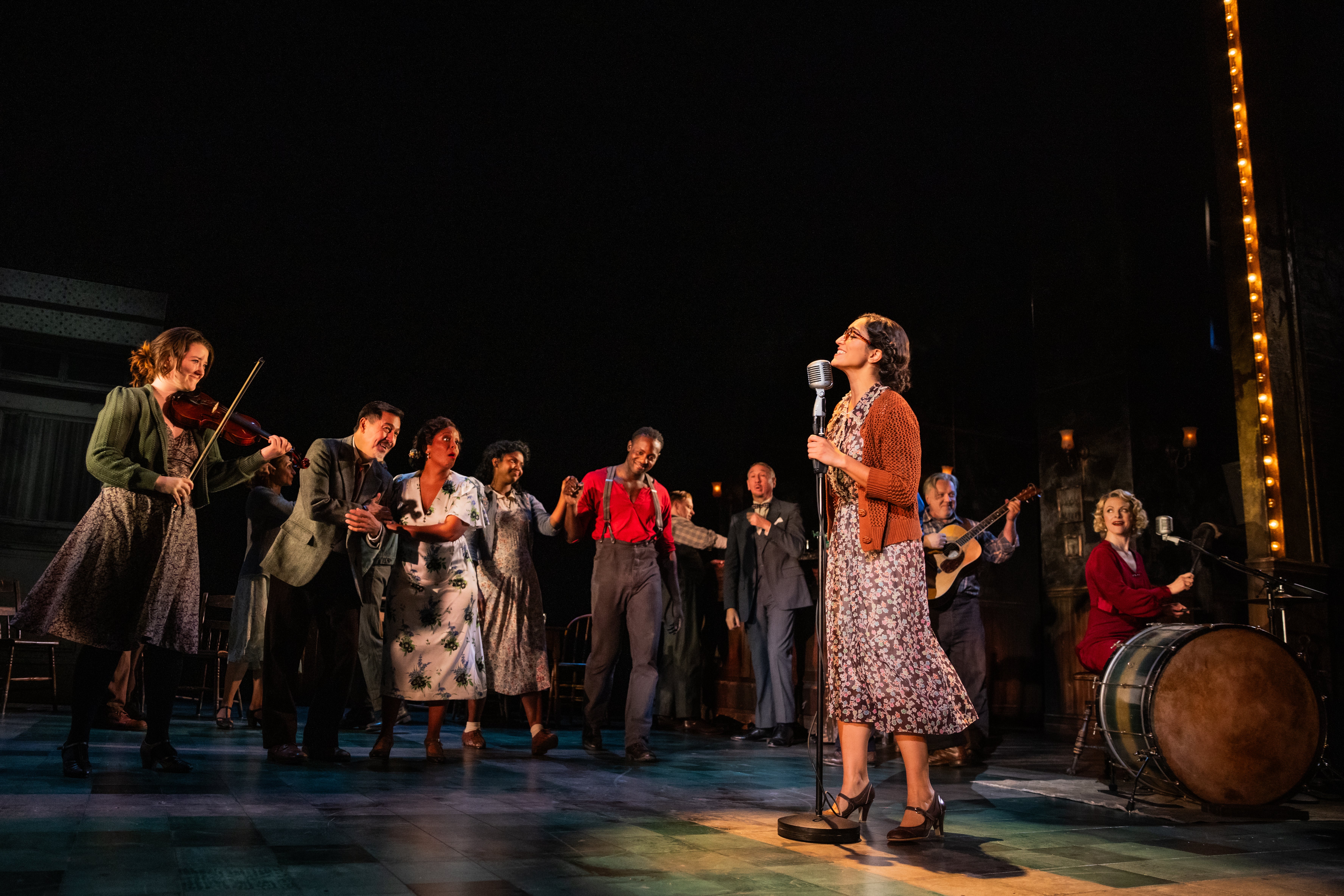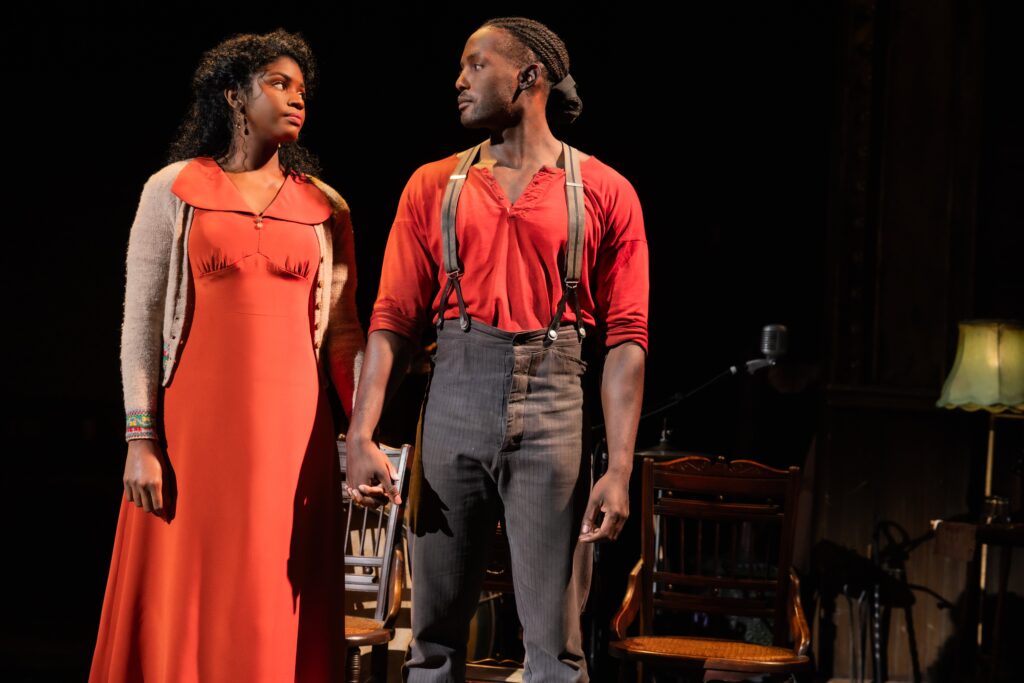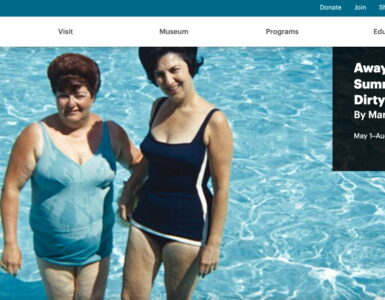
Musicals can have many different formats, but the two most prevalent structures these days are the traditional and the jukebox. The traditional (incorporating Sondheim, because his changes are now part of the musical lexicon) is the usual Broadway show, anything from Annie to Sweeney Todd. The jukebox is a show spotlighting the music of one artist, usually with a very loose story tying the songs together, but it’s basically just an excuse to play 25 ABBA songs in a row. One might imagine that Girl from the North Country, a production which features the songs of Bob Dylan, would fall into the jukebox category. But au contraire, my friend! Girl is neither traditional nor jukebox. Conor McPherson’s show is more experimental, a mostly downbeat drama with occasional Dylan songs shoehorned in, many of which seem inorganic to the story. The current touring production of Girl at the Pantages tries very hard to make this combination work, but although the cast is clearly talented, the results are unfortunately uneven.
In 1934 Duluth, Minnesota, young woman Marianne (Sharaé Moultrie) lives with her adoptive parents Elizabeth (Jennifer Blood) and Nick (John Schiappa) in their boarding house. Her brother, Gene (Ben Biggers), wants to be a poet but mostly seems to get into drunken fights. Nick is supposed to be taking care of Elizabeth, who is suffering from a form of dementia, but instead is having an affair with one of their boarders, Mrs. Neilsen (Carla Woods). Ex-boxer Joe (Matt Manuel) and Reverend Marlowe (Jeremy Webb) are new arrivals, interesting but mysterious. Mr. and Mrs. Burke (David Benoit, Jill Van Velzer) are there with their mentally challenged adult son Elias (Aidan Wharton) and are running out of money. But Marianne has more pressing concerns – she’s pregnant and Nick wants to marry her off to old Mr. Perry (Jay Russell), which is a horrifying prospect for her.

Moultrie manages to take a fairly generic character and make it appealing via her charisma and talent, and she displays a strong voice on “Tight Connection to My Heart” and “Idiot Wind.” Schiappa brings energy and edge to bear on the role of Nick and makes him compelling, although Biggers is less lucky with a more undefined role. Webb brings a villainous relish in his work as the Reverend, and Woods’ great vocal skills are put to good use in many numbers. Manuel stands out as the likeable Joe, and his rendition of “Hurricane” is a highlight of the show. Benoit and Van Velzer do good, detailed work as the anxious Burkes, and Wharton has a stunning moment in which his performance of “Duquesne Whistle” fills the vast Pantages with his voice. Russell is both funny and sad as Perry, and he gets the best speech in the play, which he makes the most of. Finally, Blood is superb as the alternately loony and sharp Elizabeth, nailing every aspect, from her delivery of acerbic or blunt dialogue to her creative physicality, dancing with sudden joy or miming to people only Elizabeth can see.
The best thing about playwright Conor McPherson’s direction is that it isn’t static – the stage positively buzzes with the energy of the large cast moving around – but it almost feels too busy, as if many actors are moving about just to create an artificial sense of vitality (movement director Lucy Hind may also have contributed to this). It’s a handsome-looking show, and Mark Henderson’s lighting design should credit for a lot of that (it’s especially fine during a performance of “Like a Rolling Stone” in which the backlight creates haloes around the hair of Blood to create a strikingly lovely effect). One of the problems with Girl, however, are the new arrangements (musical director and arranger Simon Hale) of the Dylan songs, which generally change the up-tempo numbers into lugubrious ballads that don’t work as well as their original configurations.
This leads to the show’s biggest issue, which is the concept and implementation of said concept in the writing. McPherson’s initial concept to essentially do a dramatic piece interspersed with Dylan music could conceivably have worked, but the way in which it was actually done uses songs that seem to have almost no bearing on the dramatic scenes they’re meant to be commenting on. One head-scratching inclusion is “Señor (Tales of Yankee Power),” which seems to have very little to do with 1934 Duluth, MN. Several of the songs are made into medleys, which might be appropriate for a jukebox show, but not so much here. The play works better in its dramatic moments, but McPherson has stuffed so many characters and plots into it that none of them feel fully explored – this piece definitely needs more focus.
Girl from the North Country isn’t a bad play – it’s an intriguing experiment that doesn’t quite succeed. Enormous effort and thought have clearly been poured into this show, and I respect that something this different was attempted at all.
Girl from the North Country is presented at the Hollywood Pantages Theatre and plays through June 2, 2024. Tickets are available here.






I’m really enjoying the design and layout of your website.
It’s a very easy on the eyes which makes it much more enjoyable for me to
come here and visit more often. Did you hire out a designer to create your
theme? Great work!